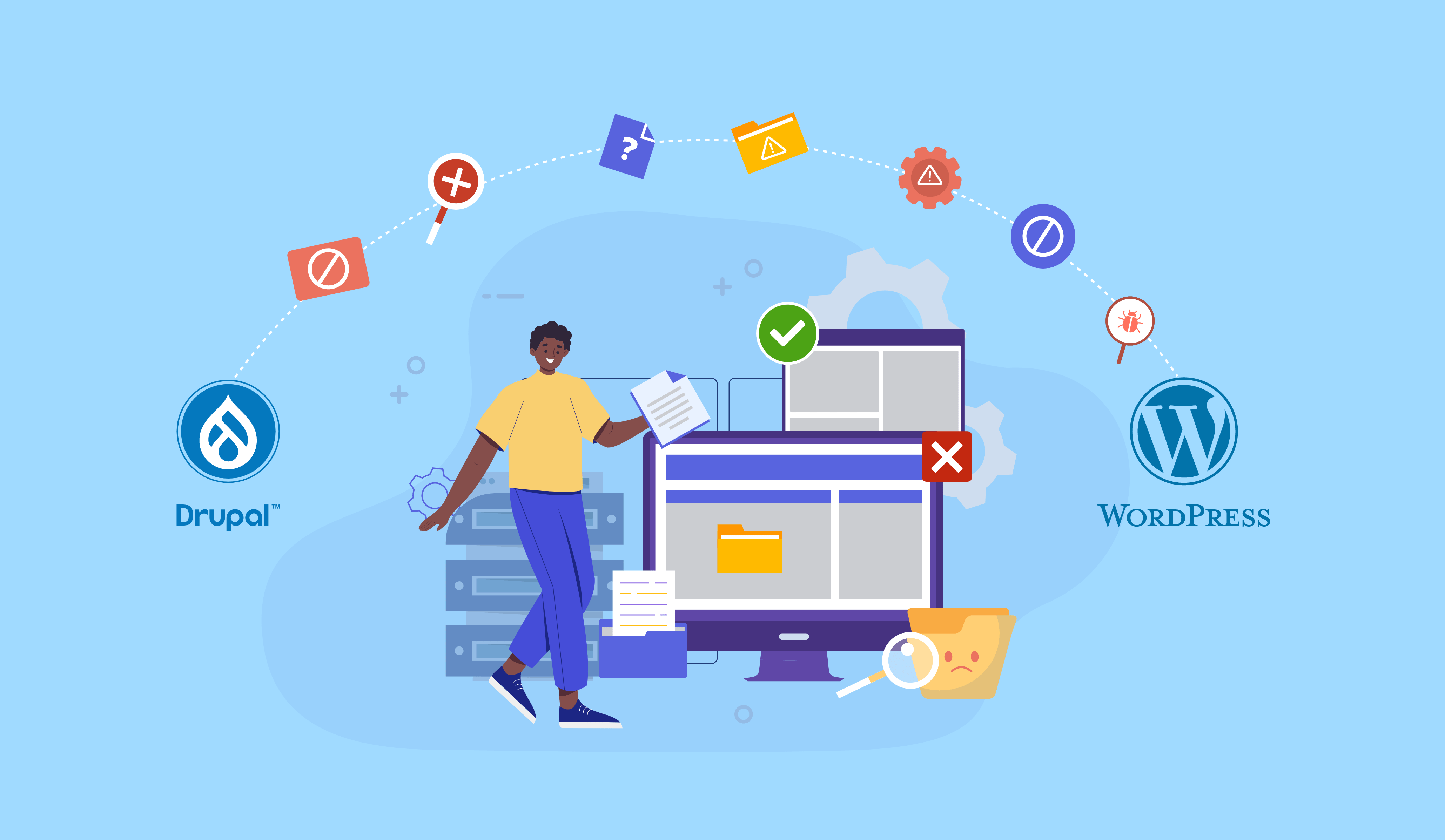Running a high traffic website is never easy. When hundreds of thousands or even millions of visitors come to your site, things can start to go wrong in a hurry. And as that traffic scales, the chance of a small problem turning into a massive issue increases. In the best-case scenario, you’ve already engineered your website to handle high loads of traffic. But far too often we see clients that see too late an issue with site performance under load, causing them to lose out on important attention and revenue.
So what’s to be done? The cold hard truth is that high-traffic websites require tuning, tweaking, testing, and monitoring to ensure they perform their best when faced with a high quantity of visitors or users. But absent a skilled engineering team or an unlimited infrastructure budget, here are a few suggested best practices for how to handle high traffic events for your news or publishing website.
Make Use of a Content Delivery Network (CDN)
A Content Delivery Network (CDN) is a network of globally distributed physical servers. This geographically distributed mechanism allows a CDN to deliver information faster to each visitor according to their proximity to one of its servers. In short, the website your news or media company has put online doesn’t reside on just one server but on a larger network of servers (called “pops”) that serve the traffic closest to them.
This method is achieved by caching website data, using physical infrastructure, and employing mapped proxy servers that are built on the idea of faster data delivery.
For instance, if someone in Asia is trying to access a website that is located in South America, they won’t have to wait for the data to come from a server located on another continent. Instead, the Asian visitor may access the site through pop in Hong Kong or Australia, reducing the distance of transmission between the browser and the site itself.
As an additional benefit, proper use of a CDN decreases the load on your own physical infrastructure. Decreased load means your servers can perform better and your overall infrastructure cost should be lower – much lower – than if you were simply adding more and more webheads to try and solve any issues caused by high traffic.
In summary, using a CDN allows you to work towards increasing your news site’s traffic with the assurance that you can meet the high demands that come with your website’s expansion. It is a low latency, a high-performance mechanism that ensures your website’s wellbeing in the long run and helps deliver an excellent visitor experience. It is one of the mechanisms to handle the high traffic of your website.
Choose to Utilize the Functionality of Caching
Caching is an effective method to reduce your site’s load time, and in turn, a very efficacious way to manage the demands of high traffic. In addition to caching found in the use of a CDN above, you can actually cache your site’s static content in a number of other ways as well. First and foremost would be caching content like text, images, and even videos on your own infrastructure. This means that each time a visitor comes to your server, the server doesn’t generate a completely new version of the website for that visitor. Instead, it takes the stored components – the cached items – and presents them quickly and cleanly without taxing the server.
To make it simpler to understand, caching allows your website to store data that was accessed recently so that it can be delivered quickly through the next access attempt.
Any requests to deliver that data are not catered by your web server, but through local aspects such as CDNs, cloud load balancers, or web browser functions. This optimizes the website load time while also reducing the load time on your web server.
For high traffic websites, using caching to decrease the server load and the website low time is crucial to their success. It is established that site load time is correlated to a website’s user retention: famous news network BBC’s website lost an additional 10 percent of its visitors for each second it took to load information on its page.
If your website uses a content management system (CMS) such as WordPress, then caching could be as easy as installing a simple caching or CDN plugin. If not, then you can use alternate methods such as signing up with a CDN or cloud server. You can also use these options together for optimal caching and greater website performance.
For high traffic news and media sites or publishers, caching is of critical importance because it is likely that many visitors are not experiencing your site for the first time. This means that elements like your logos, menus, and bylines are able to be cached and served quickly to returning visitors and ultimately help us to handle the high traffic.
Optimize Your Images
Many news websites provide relevant images, especially if they have to visually appeal to their audience. But an onset of thumbnails and images on each page can drastically increase a site’s load time, which in turn decreases its performance as traffic scales. We’ve seen some people suggest that fewer images are the answer, but with web users more and more interested in the visual aesthetic of their online experience, we don’t see that as a viable or reasonable solution.
To avoid going down this path, you need to ensure that you are optimizing your images. You can reduce image size through compression or optimization plugins, serve the images from a faster web server, or even streaming them from the cloud rather than your own, physical web server.
These actions go a long way into making sure that your website could cater to the high traffic and the demands that it brings along with it. This way, not only do your visitors have a greater experience in terms of load time, but your server also doesn’t have to deal with additional demands in terms of resources.
Additionally, Lazy Loaders now exist that help sites only load images on the page that is viewable in the browser. So if your web pages feature images below-the-fold, those images won’t load until the user begins to scroll further down the page. The combination of image optimization and lazy load tools can deliver fast image loading without sacrificing resolution and quality.
Choose a Reliable Hosting Provider
One of the easiest yet one of the most important ways to ensure that your site is equipped to handle high traffic is to make sure you’ve chosen a reliable and high-quality hosting provider.
You can take all the measures in the world to optimize your website’s speed, performance, and content delivery but if your hosting isn’t equipped to handle the challenges of high traffic, then all of those efforts essentially are in vain. Imagine building a beautiful car with the safest tires and a great sound system…but a broken-down engine under the hood. None of the other parts matter much if the vehicle won’t start!
And while there are many quality hosting partners to choose from, we highly recommend putting high-traffic sites either on the cloud or (at a minimum) a cluster of dedicated servers. Trying to serve tens or hundreds of thousands of visitors with a VPS or, even worse, shared hosting is an absolutely awful idea. One other suggestion when it comes to your hosting provider of choice: even though it may seem like a burden on your busy schedule, regularly speaking with your Account Manager or technical contact at your host on a regular basis is not only a great way to ensure they are focused on helping you be successful, it’s also a great way to learn what new technology they offer that can make your site perform even better.
Do Not Compromise on Security
You’ve likely heard the saying, “Why do people rob banks? Because that’s where the money is.” High traffic websites can be high-value targets for hackers and other nefarious parties for the same reason: that’s where most visitors are. Whether they intend to steal user data (like credit cards or personal information) or simply want to deface your site and steal your traffic, media and publishing web properties have always attracted hackers.
Having tools such as a web application firewall (WAF) help your website’s server and infrastructure from being compromised by automatic attacks. Having additional mechanisms such as Transport Layer Security (TLS) ensures that your visitors’ information is not compromised. We also recommend having regular malware scans to protect against scripting attacks or SQL injections.
It’s also a great idea for new and media sites to utilize monitoring tools over the website and its traffic logs to ensure sniff out repeated visits from suspicious IP addresses. If detected, you can block such IP addresses from accessing the site before they are able to do it harm.
Similarly, you can also do periodic safety checks and tune-ups on your website to make sure that it is up to par with industry standards in terms of security.
Conclusion
When handling high traffic websites that push out a lot of content and serve a large number of visitors, you have to walk a fine line between managing user expectations and your website’s own health and well-being. The good news is that the best practices and recommendations above can help optimize your site for a heavy load without compromising on critical aspects like speed and security. By working in concert, each of these suggestions can help play a crucial role in delivering a great experience for thousands or even millions of users without opening up the door to hackers or downtime.
That said, managing a high-traffic media, news, or publishing site is not for the weak of heart. When every happy visitor can result in greater sales, ad revenue, or ongoing engagement it is crucial that your site is engineered properly and maintained appropriately. As such, if you have any questions or concerns that you want to discuss with a professional, do not hesitate to reach out to our reliable, professional and experienced development team today. We have years of experience managing some of the most complicated and highest-trafficked sites on the internet and would welcome the opportunity to help you take it to the limit.




